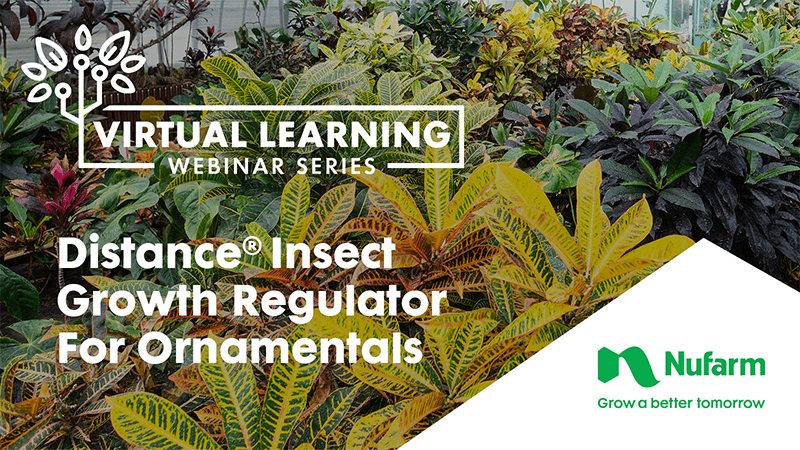Partners Against Pests

As researchers and extension specialists work with growers to reach that perfect balance of efficacy and economy in their pest control programs, many find that the pests themselves aren’t the only challenge. Another is the myth that use of conventional chemicals and biopesticides is an either/or proposition.
IPM advocates admit it’s easy to see how this myth got started. Organic growers use biopesticides as a stand-alone because most products are registered for use on organic crops. So biopesticides are often linked to organic production.
But in reality, only organic growers use biopesticides exclusively. In fact, organic production represents only a small percentage of biopesticide use. All things considered–economics, efficacy, sustainability and crop quality–traditional growers are learning that a program using biopesticides alongside conventionals is often most effective.
Too Much Of A Good Thing
Resistance management is one piece of that puzzle. Hired in 1989 as an entomologist at the University of Georgia, Dr. Alton Sparks works to control diamondback moth in cole crops. At that time, growers were using organophosphates to control diamondback moth, but the pest developed resistance.
A few years later, a new generation of synthetic chemistry came on the market and, as Sparks has observed, “They worked great at first, but now we’re seeing resistance to those products.”
“In Georgia, the growers were using one of the newer products almost exclusively, in spite of the fact the label told them not to,” explains Dr. George Kennedy, professor of entomology at North Carolina State University. Resistance developed as a result and now, because of its overuse, Kennedy says the manufacturer is considering taking the product off the market in Georgia.
To prolong the efficacy of synthetic pesticides, rotation is mandatory. The recommendation for most products is that they not be used more than twice back to back. The products need to be rotated with a different product containing a different mode of action. “Ideally, you don’t subject subsequent generations to the same mode of action,” Sparks says.
Because biopesticides contain multiple modes of action, they are well suited for rotation in pest management programs. For example, a biopesticide like Bt creates holes in the gut of the pest, whereas conventional pesticides are often neurotoxins.
Complementary Effects
Michael Braverman, manager of Biopesticide Program, IR-4 Project at Rutgers University, agrees that the message is simple when encouraging growers to integrate biopesticides into their spray programs. “It is important to understand that it’s not biopesticides versus conventional,” he points out. “It’s biopesticides and conventionals.”
Resistance management isn’t the only benefit. John Francis, director of marketing and technical services at BioWorks, Fairport, N.Y., says biopesticides can often add a level of control while reducing growers’ costs, with a positive impact on crop quality.
In the case of one greenhouse grower, Francis recalls how he used synthetic fungicides to control pythium, fusarium and other diseases in his poinsettias. The grower required 12 pallets a year of the synthetic material to get an acceptable level of control. However, once he mixed a biological fungicide into his program, he now uses only one pallet a year of the synthetic material.
Francis explains that the biological fungicide does a marvelous job preventing disease, but it is not systemic. So to ensure initial cleanliness of the crop or to provide control during heavy disease pressure, the synthetic fungicide is applied as a drench to knock out existing diseases.
Application Considerations
Another key benefit that biopesticides offer is in the area of residue management. Many growers like to come in with an application close to harvest to maintain the quality of their mature crop, especially if there is a weather event that would increase pests or diseases. Biopesticides offer growers that flexibility.
In season, however, growers have the option to apply biopesticides as a stand-alone, tank mixed with a synthetic chemical or substituting a biological for a synthetic, one or more times, as part of the spray cycle.
Multi-state trial results released in 2007 by Valent BioSciences Corp., Libertyville, Ill., found that the company’s Bt-based products worked most efficiently when used in rotation as part of an integrated pest management program (IPM). The trial results showed that tank-mix treatments were more effective than rotational treatments, but also more costly.
The important message is that rotational treatments were found to be less expensive while achieving a better level of control and producing a higher yield than the plots treated with synthetic insecticides alone, says Dr. Ramon Georgis, global business manager microbials for Valent Biosciences and a co-author of the study.
A good example of this biological-synthetic chemistry partnership can be seen in apple and pear crops in the Pacific Northwest. Here, codling moth is a major menace and the pest has developed resistance to organophosphates. Michael Dimock, director of technology and development for Certis USA, Columbia, Md., points out that many conventional growers are rotating biological products with conventional inputs to control codling moth.
“Application of the biological is timed for optimal efficacy, usually early stage larva, just after egg hatch,” he says. This method of integrating biological and synthetic products gives an acceptable level of control while not allowing the pest to build resistance to a single mode of chemistry.
“Almost all biological products are not meant to be used as stand-alones,” he says. “They are designed to make all the inputs work better.”









